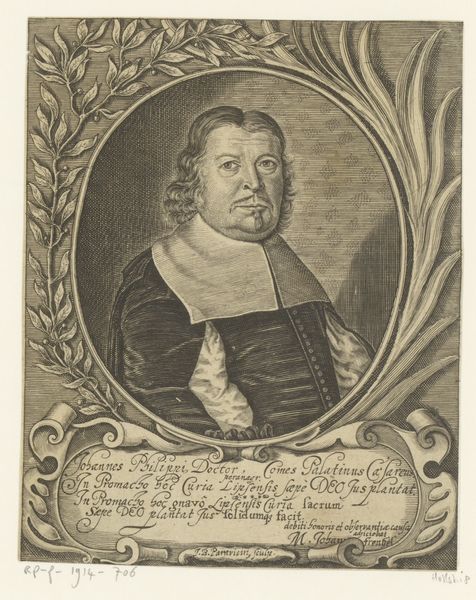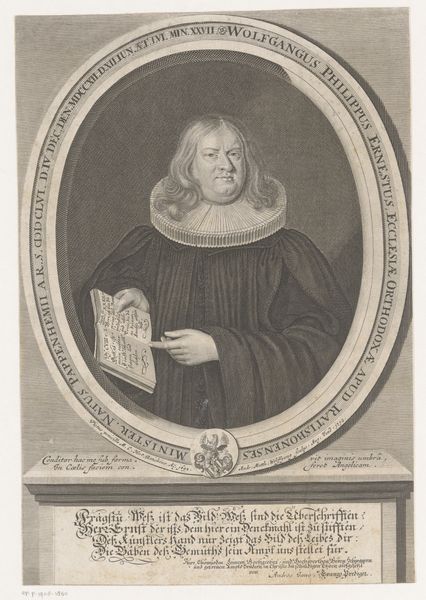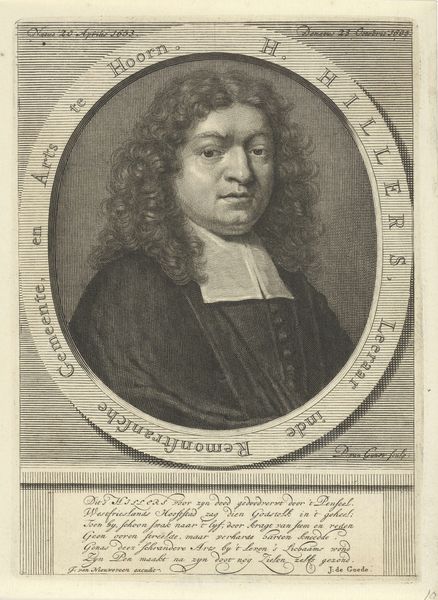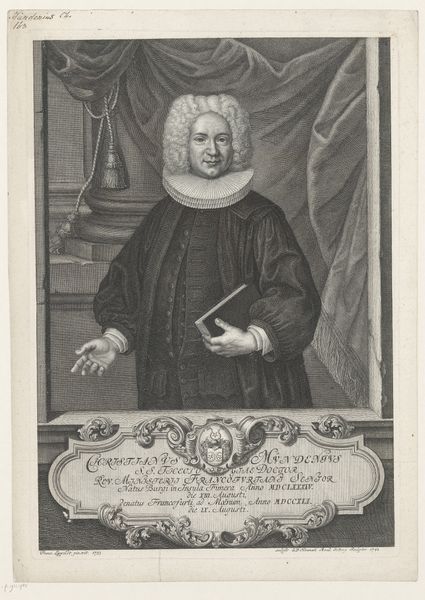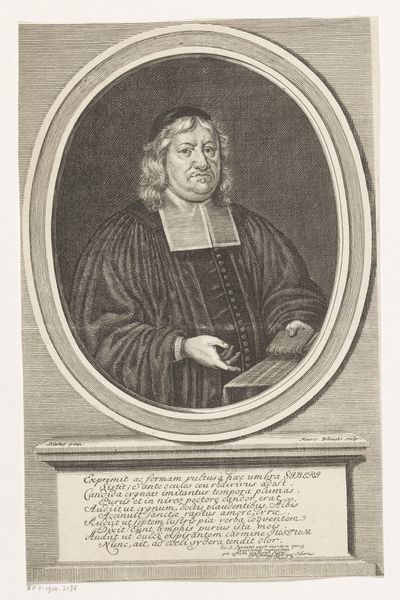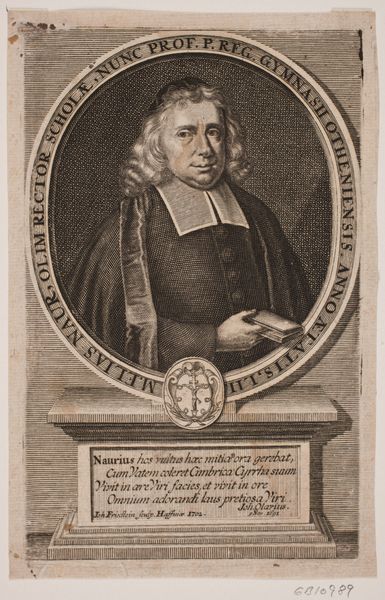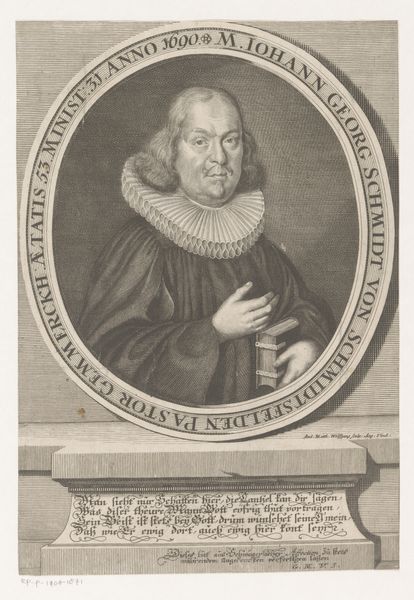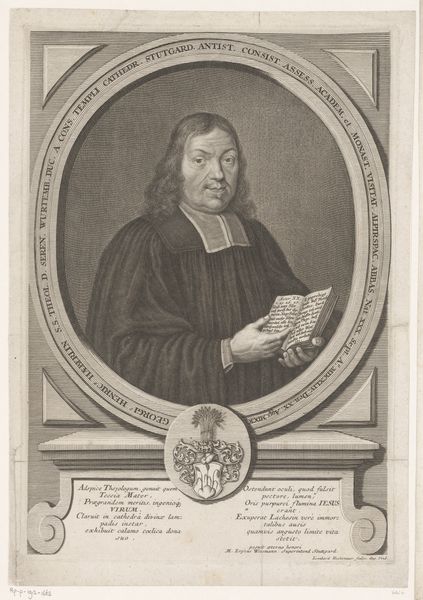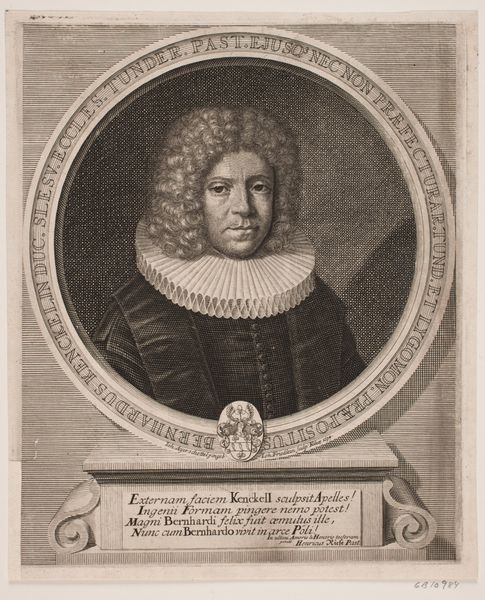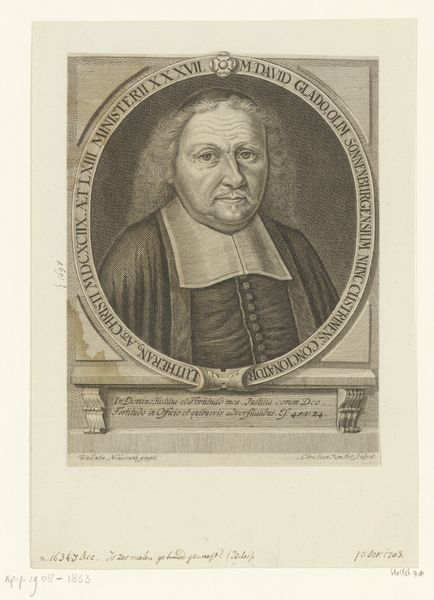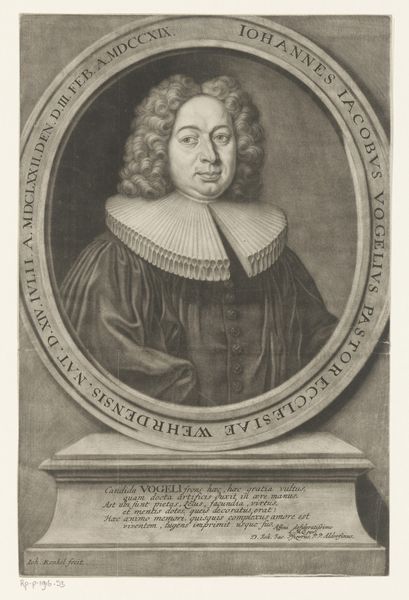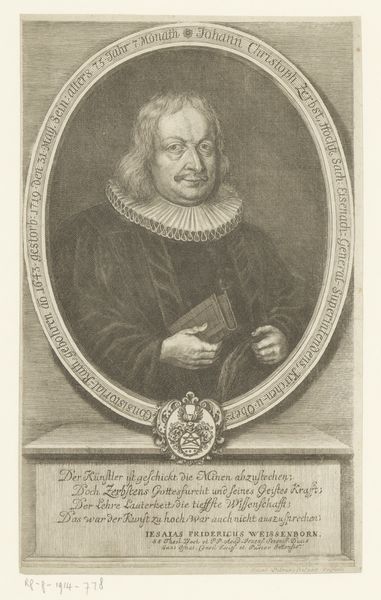
print, engraving
#
portrait
#
baroque
# print
#
old engraving style
#
19th century
#
portrait drawing
#
engraving
Dimensions: height 298 mm, width 203 mm
Copyright: Rijks Museum: Open Domain
Editor: This is "Portret van Samuel Benedikt Carpzov" by Johann Georg (II) Bodenehr, made sometime between 1707 and 1730. It's an engraving, and I'm struck by how much the final quality relies on the engraver's skill and labor with what seem to be rather simple materials. How do you interpret the role of the engraving process itself in a portrait like this? Curator: The act of engraving is essential to understanding this image. Consider the social context: printmaking allowed for wider dissemination of images and ideas. A portrait like this was less about individual artistic expression and more about reproducing and circulating the image of someone important, a member of the Saxon court it appears from the text. What does it mean to see Carpzov through this medium, this technology? Editor: That's interesting. It sounds like the focus isn't on some sort of artistic flair but on mass production and the importance of communicating status through readily available prints. How does this compare to, say, a painted portrait of the same period? Curator: Exactly! A painted portrait would be unique and likely commissioned by Carpzov himself or someone of similar status. This engraving, though, has a different purpose. Its creation is related to networks of production, commercial exchange, and accessibility to a wider, though still elite, audience. Think about the labor involved; an artisan carefully etching an image for reproducibility. The materials themselves—the metal plate, the ink, the paper—facilitate the message. Editor: So, in that way, the material process itself becomes part of the portrait's message? The image is less about Samuel Carpzov the man, and more about Carpzov the widely circulated image, made accessible through the technology of printmaking. Curator: Precisely! The engraving technique, the printmaking industry, and even the paper it's printed on – these all shaped the final image and influence our understanding of Carpzov's place in society and the power dynamics of the period. Editor: That's really shifted my perspective. I wouldn't have thought about all the stages required to bring it to life! Curator: By exploring these processes, we've revealed a lot about the context in which images were created, circulated, and consumed during that era.
Comments
No comments
Be the first to comment and join the conversation on the ultimate creative platform.
